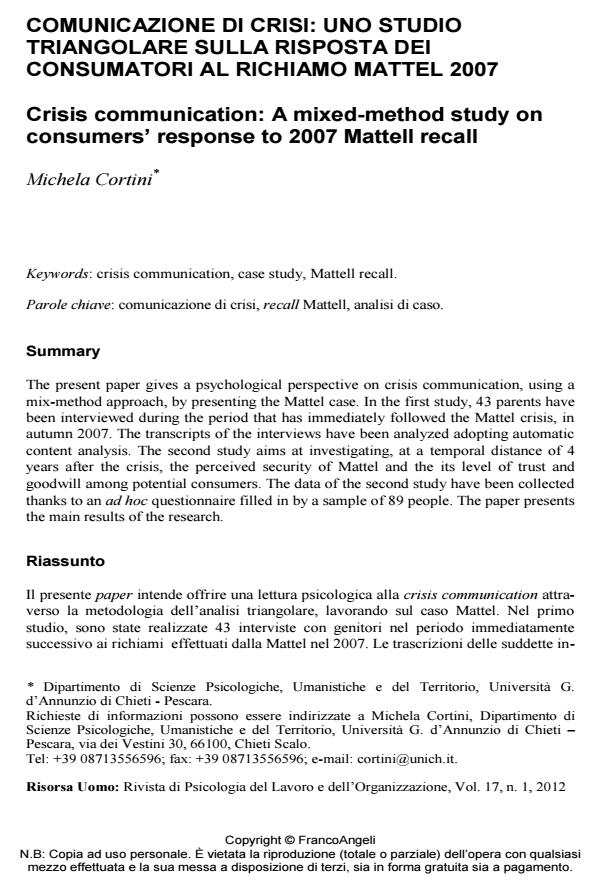Comunicazione di crisi: uno studio triangolare sulla risposta dei consumatori al richiamo mattel 2007
Titolo Rivista RISORSA UOMO
Autori/Curatori Michela Cortini
Anno di pubblicazione 2014 Fascicolo 2012/1
Lingua Italiano Numero pagine 16 P. 103-118 Dimensione file 802 KB
DOI 10.3280/RU2012-001010
Il DOI è il codice a barre della proprietà intellettuale: per saperne di più
clicca qui
Qui sotto puoi vedere in anteprima la prima pagina di questo articolo.
Se questo articolo ti interessa, lo puoi acquistare (e scaricare in formato pdf) seguendo le facili indicazioni per acquistare il download credit. Acquista Download Credits per scaricare questo Articolo in formato PDF

FrancoAngeli è membro della Publishers International Linking Association, Inc (PILA)associazione indipendente e non profit per facilitare (attraverso i servizi tecnologici implementati da CrossRef.org) l’accesso degli studiosi ai contenuti digitali nelle pubblicazioni professionali e scientifiche
The present paper gives a psychological perspective on crisis communication, using a mix-method approach, by presenting the Mattel case. In the first study, 43 parents have been interviewed during the period that has immediately followed the Mattel crisis, in autumn 2007. The transcripts of the interviews have been analyzed adopting automatic content analysis. The second study aims at investigating, at a temporal distance of 4 years after the crisis, the perceived security of Mattel and the its level of trust and goodwill among potential consumers. The data of the second study have been collected thanks to an ad hoc questionnaire filled in by a sample of 89 people. The paper presents the main results of the research
Parole chiave:Comunicazione di crisi, recall Mattell, analisi di caso.
Michela Cortini, Comunicazione di crisi: uno studio triangolare sulla risposta dei consumatori al richiamo mattel 2007 in "RISORSA UOMO " 1/2012, pp 103-118, DOI: 10.3280/RU2012-001010